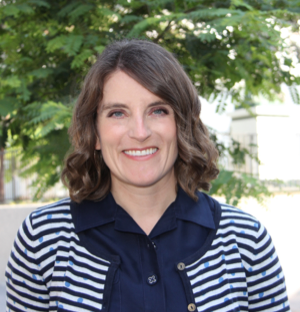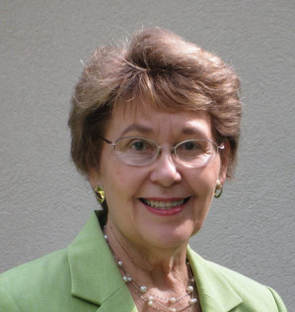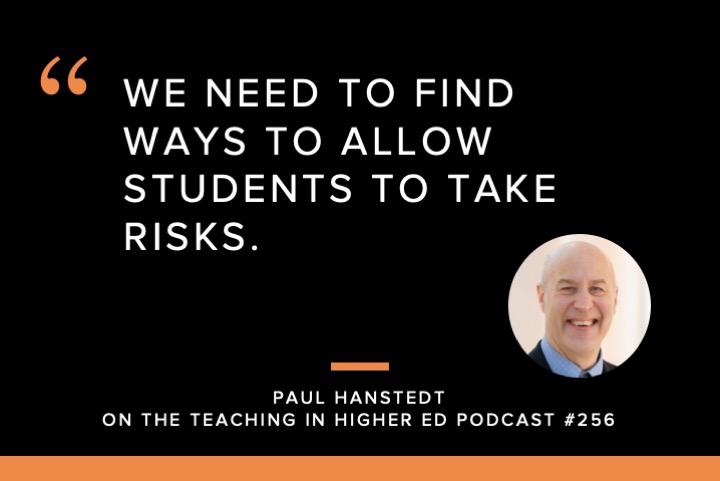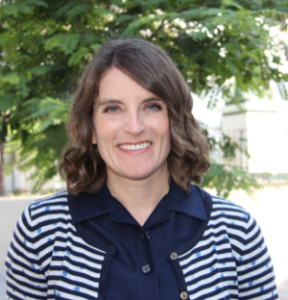
“The Most Powerful Student Success ‘Intervention'”: NISOD & ACUE’s Collaboration
ACUE and the National Institute for Staff and Organizational Development (NISOD) officially launched a  major collaboration to promote faculty and student success through excellence in instruction in May 2019 at NISOD’s International Conference on Teaching and Leadership Excellence.
major collaboration to promote faculty and student success through excellence in instruction in May 2019 at NISOD’s International Conference on Teaching and Leadership Excellence.
Through the collaboration, ACUE is offering Regional Seminars hosted by NISOD member institutions to provide faculty with a unique, blended-learning opportunity to earn credit toward ACUE’s Certificate in Effective Collegiate Instruction.
NISOD executive director Edward Leach and ACUE president and co-founder Jonathan Gyurko delivered the below remarks during the plenary luncheon.
Ed Leach, Executive Director
National Institute for Staff and Organizational Development
 “Last November, NISOD formed a new collaboration with the Association of College and University Educators. We have a continuing goal of bringing new benefits and resources to NISOD members, and our collaboration with ACUE does just that.
“Last November, NISOD formed a new collaboration with the Association of College and University Educators. We have a continuing goal of bringing new benefits and resources to NISOD members, and our collaboration with ACUE does just that.
“Founded in 2014, ACUE partners with colleges and universities to prepare and credential faculty in effective instruction. Through ACUE’s credit-bearing, online courses, faculty members have an opportunity to learn about and strengthen their use of proven teaching techniques.
“Faculty also earn the only nationally recognized teaching credential endorsed by the American Council on Education and recognized by NISOD and other major associations. ACUE partners with community and technical colleges and helps to expand the impact of teaching centers as part of an institution’s strategic plan for faculty and student success. Many NISOD members are already partnering with ACUE, including Miami Dade College, Kansas City Kansas Community College, Truckee Meadows Community College, Lamar Institute of Technology, among others. Joining us today is Dr. Jonathan Gyurko, ACUE’s president and co-founder.
“When Jonathan and I started discussing the missions of our two organizations, we really hit it off, and I knew right away that we shared the same goals: to provide high-quality resources to faculty, to discover and share new approaches, and to help many more students be successful. Please join me in welcoming to the stage Dr. Jonathan Gyurko.”
Jonathan Gyurko, President and Co-Founder, Association of College and University Educators:
“Thank you, Ed, for that wonderful introduction and the opportunity to work together. And congratulations on a phenomenal conference and everything that you do for your members.
phenomenal conference and everything that you do for your members.
“Today, there are so many ‘student success’ interventions underway. We’ve got guided pathways and intrusive advising, digital alerts and adaptive courseware, shifts to co-requisite instruction, career centers and academic centers—the list goes on.
“As important as all these things are, we know that the most powerful student success ‘intervention’ is right here among us—our faculty. No one else is in a better position to make a bigger impact. And studies show: Students are more than twice as likely to go on to productive careers and rewarding lives when faculty inspire them, take an interest in their lives, and teach in ways that create meaningful, academically challenging, and relevant learning experiences. No surprise to anyone here today.
“At ACUE, our single-minded focus is to ensure that every faculty member in the country—full-time and part-time—is prepared and supported to teach well, to ensure that every student experiences the engaging and inspiring education we want for them all.
“In just a few short years, over 5,600 faculty members have earned an ACUE credential, and they’re making a measurable, demonstrable impact. Through research studies with our partner colleges, we see stronger student engagement and growth mindset, improved grades, fewer withdrawals, and closed completion gaps among students from different backgrounds when taught by ACUE-credentialed faculty.
“Together with NISOD, we’re reaching and supporting more faculty through new NISOD/ACUE Seminars that we’re hosting with NISOD member institutions across the country this coming academic year. And we’ll be calling for the next round of host sites later this summer.
“Ed and I will be sharing more about ACUE and NISOD’s collaboration at our session this afternoon, so I’d like to close with a short reflection from a faculty member at one of our community college partners. Like many of us, [she] has deep subject matter expertise but never really had any comprehensive preparation to teach with evidence-based practices until she earned her ACUE credential. Here’s what she shared:
‘I used to believe my job was to deliver knowledge—to “give” psychology to my students, and I didn’t think I needed to change my teaching. But I tried some new approaches. Sometimes they’d go really well. Sometimes I’d need more practice. And my students got more engaged. They’re completing their readings because they know I’m going to ask more questions. They’re applying knowledge in ways that I would never have expected. They’re more comfortable coming to speak with me, and I understand a lot more about where they’re coming from. Now I see that my job is to facilitate their learning. Reaching each and every student requires a lot of different approaches, and I’m more thoughtful about what I’m doing because every minute is precious.’
“Every minute is indeed precious, and I thank you for giving me a few of yours. Thank you, and enjoy the rest of the conference.”

Beyond the Final Performance: How to Build Transferable Knowledge and Skills
By Emily Moss
It was the last class meeting of Wind Ensemble for the semester, and I asked my students to reflect on what we had learned throughout the year. Our final performance had been a success, but their answers to a handful of questions—asking about what pieces they found most enjoyable and challenging, what musical skills they felt that they had developed individually and as a group—would shed some light on how the year had really gone.
They wrote their answers down on a piece of paper and then shared out with the group. Some of their responses were predictable—others were surprising. Many felt their growth as musicians came steadily throughout the year, while some expressed excitement at how our more challenging repertoire forced them to “rise to the occasion” and perform at an unexpectedly high level. All of them referenced skills they developed, which will be built upon when we return in the fall.
As the academic year concludes, we hear a lot about year-end student performance and results. There are final exams, final grades, course completions, etc. But my students’ reflections provided an important reminder: while our final performance may have been stellar, something really to be proud of, what they achieved in terms of musical growth throughout the year is truly the most important outcome.
Like any educator, directing large ensembles at an academic institution comes with tough decisions about where and how to focus your teaching. There is rarely enough time in rehearsal to achieve all of the musical goals present in a particular set of repertoire, let alone to deepen and build upon our students’ musicianship and musical growth. With public performances looming, we often feel the pressure to focus on simply getting the music ready; we want the music to represent the best our students can bring to a performance.
But is a spectacular performance really our main goal? Obviously teaching our students and preparing for final performances are not mutually exclusive; they are not, however, inextricably linked.
How do we know that our students are learning anything in our large ensembles beyond the ability to perform specific repertoire? We are all familiar with this scenario: after an exemplary performance, rehearsal begins on a new piece that has similarities to a recently performed piece. Yet somehow, the musicians do not seem to recognize any of these similarities. It feels as if we are back at square one. Why don’t they remember what we did weeks ago?
Transfer: Applicable and Adaptable Knowledge and Skill
One reason is that learning specific repertoire does not necessarily involve learning how to think about how and why they are performing the repertoire in a specific way. In an exemplary performance, students demonstrate the ability to perform the music, but did they learn why they were asked to perform it that way?
Robert Duke, in his book Intelligent Music Teaching: Essays on the Core Principles of Effective Instruction, describes a phenomenon in education called transfer. Essentially, transfer is when a learner is able to apply knowledge or skills in new and different circumstances.
This is arguably the most important outcome of teaching. Can your students take what they have learned and use it in the future in some meaningful way? When we pass out that new piece of music, we hope our students recognize the similarities and apply their knowledge and skills appropriately. The reality is this does not just happen automatically. “[T]ransfer is not reliably automatic; that is, learners who encounter novel situations do not always apply their knowledge and skills in ways that effectively solve problems and accomplish goals” (Duke, p. 141-142).
Facilitating the transfer of knowledge and skills during ensemble rehearsals goes beyond the traditional model of rehearsing. However, it can be done with a few simple changes to the way rehearsals are constructed.
How to Facilitate Transfer in a Rehearsal…or a Class
A quick and fairly simple practice involves structuring the rehearsal around one or two main skills. When students experience utilizing the same musical skill across several pieces or exercises, their focus is on skill acquisition more than the specific repertoire.
For example, if you want to focus an entire rehearsal around internal pulse (the consistent “feeling” of the beat throughout any music), you can use your warm-up exercises to introduce the concept and reinforce it during each new excerpt, providing opportunities to frame their thinking around internal pulse and draw connections between how it was used in the previous context and how it will be used in the new context.
Another way to help facilitate transfer in your rehearsal is by asking questions requiring students to think about why certain musical decisions are being made or how they can solve problems on their own. Instead of telling them to “fix the pitch there—you’re sharp,” you can ask a question: “What do you hear there? Is there something going on with the pitch?” Instead of: “Trumpets, you’re playing those eighth notes too long. Shorten them up,” you can ask: “Trumpets: what can you tell me about the style of a march? Why does the length of your eighth notes matter here?”
Many directors may think that telling students how to play or sing gets the ensemble performing better more quickly; taking the time to ask questions will make the rehearsal less efficient. This is true in the short term. But is saving time the main goal?
As with learning outcomes, once students begin transferring their performance knowledge and skills to future repertoire, the rehearsal time is gained back, and their music can be learned quickly and efficiently. Not to mention that if the main goal of the ensemble is to prepare students to be better musicians, the initial time is well spent.
References
Duke, R. A. (2005). Intelligent music teaching: Essays on the core principles of effective instruction. Austin, TX: Learning and Behavior Resources.
Emily Moss is an Associate Professor, the Director of Bands, and the Chair of the Department of Music at California State University, Los Angeles, where she directs the Wind Ensemble and Symphonic Band, teaches undergraduate and graduate conducting, and instructs in instrumental music education methods.
Dr. Moss is featured in ACUE’s modules: Planning an Effective Class Session, Helping Students Persist in Their Studies, Providing Clear Directions and Explanations, and Checking for Student Understanding.
| What to read next: “Tap Dance Your Way Through ACUE: Connecting With Students in Nontraditional Classes” by Julie L. Pentz and “Improving Teaching Through Reflection” by Catherine Haras |

Intentional and Transparent Assessment
Two simple ways to check in and connect with students

Understanding Our Students’ Pulse: A Q&A with Purdue University Northwest’s Neeti Parashar
 Dr. Neeti Parashar, an ACUE-credentialed educator and a professor of physics at Purdue University Northwest (PNW), advocates for making teaching expertise as much of a priority as research acumen—but this wasn’t always the case. As an international scholar and researcher, Dr. Parashar dedicated herself to the field of physics. However, when the opportunity to enroll in an ACUE course at PNW presented itself, she was quick to apply.
Dr. Neeti Parashar, an ACUE-credentialed educator and a professor of physics at Purdue University Northwest (PNW), advocates for making teaching expertise as much of a priority as research acumen—but this wasn’t always the case. As an international scholar and researcher, Dr. Parashar dedicated herself to the field of physics. However, when the opportunity to enroll in an ACUE course at PNW presented itself, she was quick to apply.
In a recent interview, Dr. Parashar describes ACUE as the “benchmark” of professional training for college educators and shares the impact of earning her ACUE credential on her career and on her students’ learning. “Students’ performance has improved, which makes me think that they are learning the material better and are happier. The DFW rate for this semester has been the lowest ever I have observed,” said Dr. Parashar. Read and watch excerpts of the full interview below.
Q: Why did you enroll in an ACUE course?
NP: I come from a STEM field. I’m a physicist. Most of my colleagues are either physicists, chemistry faculty, or engineers. I collaborate most with people in STEM fields. So while we are all pretty decently trained scientists, we’re not trained as teachers. I’m 17 years into my profession as a faculty [member], and this is the first time I’ve ever learned how to teach. This course was an eye-opener for me, in particular, and I would highly recommend it to all of my colleagues because as the whole landscape of our student dynamic changes, we need to understand the pulse of our students. ACUE provides us with the “latest and greatest,” so taking this course is a must—not a choice. For myself, professionally, it’s the best thing I’ve ever done with regards to teaching.
Q: What are some of the teaching practices you learned and implemented that really resonated with you and had an impact on your students?
NP: I decided to make two very simple changes and see their effects. So the first one was going to the class 20 minutes early. Now, 20 minutes is a long time to go and chat, but I couldn’t believe how exhilarating it was because for students who always thought there was a barrier between a physics professor and themselves, I think we broke free from that pre-conceived notion. I was able to talk to the students in a more friendly manner—about what was going on in their labs, what difficulties they were facing in the class —and it was unbelievable how well this worked. The other, really the “aha” moment for me, which students loved a lot, was me providing them with index cards at the end of every single class and asking them to write any questions they had related to the class. I would go through all of them, and then the following lecture, the first thing I did before starting new material was address those questions. I think these two things really were the big “aha” moments for me because I saw the results immediately.
Q: How did you know that the index cards were having an effect on students?
Q: Overall, how do you think your students have benefited from your experience in an ACUE course?
Q: You’ve earned your ACUE credential. What’s next? How do you plan to sustain your learning and continue to grow as an educator?
NP: I’m the type of person, despite all of the technology, who keeps a notebook. So I write down my goals usually for the coming year, for the next six months, and for the following semester. Because I’m teaching an online course, I set myself up with the challenge of applying what I learned in ACUE to my online course, which I really want to improve. That’s my summer goal. But I’m going to systematically write down all the things I learned in the ACUE modules and tweak them for the courses I’m going to teach in the coming academic year.
Q: Any final thoughts you’d like to share?
NP: In the past, I sometimes laid the blame on my students for not learning and doing enough, but that thought process was not completely accurate. I wouldn’t have known that if not for the ACUE course, since it opened my eyes to what I could do to make a difference in their education. I think our university is doing a great job by offering these training programs. I’m so glad they decided to offer the ACUE course. I usually don’t pay too much attention to non-research events on campus, but the ACUE course has triggered in me the drive to look for more opportunities to improve my teaching.
| What to read next: “José Bowen: Using Feedback From Students to Improve Your Teaching” |

Four Types of Discussion Forums in Online Courses
The below piece was originally published on Judith Boettcher’s Thoughts on Teaching blog.
By Judith Boettcher
A key component of any online course is the discussion board. As online courses have matured, we realize that not all discussion forums are or should be the same. Some discussions are for building community; other discussions are for exploring new ideas; others are for applying core concepts; and others are for gathering evidence of understanding. If the purposes of discussion boards differ, then how we structure, monitor, and evaluate the discussion boards should also differ.
Many purposes for asynchronous discussions have been identified (Painter, Coffin, & Hewings, 2003; Grogan, 2005), but in the interest of simplicity, this post focuses on four types. It is worth noting that these discussion types build in consistent, regular, and substantive dialogue and interaction between faculty and students and between students. Regular and substantive dialogue is one of the requirements for quality courses recognized and even required by federal guidelines (Toppo, 2018).
The below table, Four Primary Discussion Types for Online Courses, summarizes the purpose, design, monitoring, evaluation recommendations, and faculty involvement for each type.
Here is a brief description of the four types. The first discussion type focuses on Introductions and community-building among the students. The other three types focus on the content and tasks often associated with student activities for each course module: the Initial engagement with the content followed by Investigation and exploration of the content and wrapping up the module with Integration and summary of the content.
• Type One: Introductions and Community-Building. Online students often feel isolated from anyone who can share their immediate learning experiences. This is the reason one of the best practices for online courses recommends that a discussion forum focused on introductions is one of the first activities of any course to support the emotional component of learning (Boettcher & Conrad, 2016). This introductory discussion forum lays the foundation for student-to-student conversation, interaction, and support, creating a comfortable and trusting social presence (Garrison, Anderson & Arche, 2000). In addition to the introductory forum, a related best practice is a discussion forum as a dedicated informal student space for students to talk to each other about anything related to the course or not. This is sometimes called the Cybercafe. Other community-building discussion forums might be dedicated to talking and sharing ideas about projects. Another community-focused forum might be dedicated to mutual support about problem-solving, case studies, or just thinking aloud. This introductory and community-building discussion board is usually not formally evaluated, but guidelines state how students earn points by being present and supporting the course community.
• Type Two: Initial Content Engagement. This type of discussion forum invites students to think about what they already might know about a new idea, concept, problem, or closely related concept. The purpose of this discussion activity is twofold—for students to become aware of what they already know and encourage their curiosity about the new knowledge to come, and for instructors to develop insight into students’ existing understanding. This discussion activity is similar to a “think-pair-share” classroom activity in which students share what they think and where, when, or how they might have heard about a concept, person, idea, or related event. Evaluation of these initial discussions is generally informal, according to a rubric emphasizing participation and contributions and occasionally focusing on insights and relationships. This discussion activity often launches a new topic, module, or project before embarking on readings and other content engagement activities.
• Type Three: Investigation and Research. The purpose of this discussion type is to seriously engage students with the content. This discussion type can be the heart of the content knowledge activities, relying on activities that direct students to read, analyze, and research content material. New content knowledge builds on the student’s understandings and expands the knowledge base needed to apply and use the knowledge. Some of the discussion activities might be sharing insights from readings and suggesting applications of the content in different contexts. Other activities might be brief action studies, brief summaries of content relationships, student-to-student discussions, or simulations. Often students will start working with the ideas, researching possibilities and relationships, and connecting the dots. Evaluation of this discussion type is based on the expected level of engagement and how deep or broad their contributions might be expected. The rubric for this type of discussion will have more point values and varying requirements and expectations as to students using the core concepts, sharing ideas, and responding to the substantive ideas of other students.
• Type 4: Integration and Documentation. This discussion type has a primary purpose of gathering evidence for student understanding or grading. It includes activities that require students to use their new content knowledge to solve problems, investigate related questions, and make predictions. This type of discussion is a reflective, integrative, and action-oriented activity, often including solving problems, case analysis, and applying and integrating the new concepts with other concepts and relationships. The posting/essay in this discussion requires substantial thinking and research, including citing important relevant readings, researching, and problem-solving. This type of discussion will have the most point values, and depending on instructional goals, more or less involvement with other students. It will require more detailed feedback from the instructor.
This table summarizes the purpose, design, monitoring, evaluation recommendations, and faculty involvement for four types of discussions.
The development of good practices guiding the design and facilitation of discussion forums in online courses are still evolving. However, it is worth remembering that the guidelines and good practices for face-to-face discussions in classrooms and other civil gatherings also have a long way to go. Hopefully this analysis of types and purposes of discussion forums will aid in effective design and facilitation of online discussions.
| What to read next: “3 Ways to Enhance Your Online Instruction” by Judith Boettcher |
Notes
Note 1: Many thanks to Marlo G. Hode, Ph.D, Academic Director at ACUE, for suggesting this blog focusing on types of discussions, for generating the initial table, and for review and comments of drafts.
Note 2: Read more about other questions on discussions in the Course Beginning Tips (CB 10 – CB 17) in The online teaching survival guide: Simple and practical pedagogical tips (2 ed.) by Boettcher, J. V., & Conrad, R. M. Some of these discussions are also in the Teaching Tips library at http://www.designingforlearning.info:
How many discussions should I have each week of the course?
How should I use the discussion forum?
Which discussions will I grade and with how much formality?
Should I create different rubrics for the different types of discussion postings?
How involved should I, as the instructor, be in the student conversations?
References
Association of College and University Educators. (2019). ACUE’s Effective Practice Framework. Module 3b: Using Active Learning Techniques in Large Classes. Retrieved from https://acue.org/?acue_courses=acues-effective-practice-framework.
Boettcher, J. V., & Conrad, R.-M. (2016). The online teaching survival guide: Simple and practical pedagogical tips (2 ed.). San Francisco, CA: Jossey-Bass.
Center for Teaching Excellence University of Waterloo. (n.d.). Facilitating Effective Discussions. Retrieved from https://uwaterloo.ca/centre-for-teaching-excellence/teaching-resources/teaching-tips/alternatives-lecturing/discussions/facilitating-effective-discussions
Garrison, D. R., Anderson, T., & Archer, W. (2000). Critical inquiry in a text-based environment: Computer conferencing in higher education. The Internet and Higher Education, 2(2‐3), 1-19. Retrieved from http://auspace.athabascau.ca:8080/dspace/bitstream/2149/739/1/critical_inquiry_in_a_text.pdf
Grogan, G. (2005). The Design of Online Discussions to Achieve Good Learning Results. elearningeuropa.info. Retrieved from http://www.elearningeuropa.info/en/article/The-Design-of-Online-Discussions-to-achieve-good-learning-results.
Painter, C., Coffin, C., & Hewings, A. (2003). Impacts of directed tutorial activities in computer conferencing: A case study. Distance Education, 24(2), 159-173.
Rovai, A. P. (2007). Facilitating online discussions effectively. The internet and higher education, 10(1), 77-88, 77-99.
Toppo, G. (2018). New debate on ‘regular and substantive’ interaction between instructors and students. Inside Higher Ed. Retrieved from https://www.insidehighered.com/digital-learning/article/2018/08/08/new-debate-regular-and-substantive-interaction-between

Creating Wicked Students
Faculty nationwide earn ACUE credential

Giving a Voice to Students’ Opposing Views: Creating Conditions for Respect and Inclusivity in Class Discussions
By Harry Brighouse
 Teaching contemporary moral issues in a large lecture format presents a challenge. Of course, the students must read, write, and think. But they also need to have fruitful discussions in which different points of view are presented and argued for, ideally by their peers. With this, they can come to appreciate the full range of reasons for and against certain conclusions and can experience reasonable and respectful disagreement across difference. Maybe disagreeing with others in front of large audiences comes naturally to some students—but for most it doesn’t. I need to induce students, including those who are shy and reserved, to engage in that kind of discussion.
Teaching contemporary moral issues in a large lecture format presents a challenge. Of course, the students must read, write, and think. But they also need to have fruitful discussions in which different points of view are presented and argued for, ideally by their peers. With this, they can come to appreciate the full range of reasons for and against certain conclusions and can experience reasonable and respectful disagreement across difference. Maybe disagreeing with others in front of large audiences comes naturally to some students—but for most it doesn’t. I need to induce students, including those who are shy and reserved, to engage in that kind of discussion.
Even with techniques like think-pair-share and good questions, students can be nervous about expressing their thoughts about controversial political and ethical issues, especially when they believe that their thoughts may not be widely shared. I use two tools to help.
Surveying Students
First, students take an online survey in the first week of the semester. The questions include what their pre-class beliefs are about various matters that we’ll discuss: Do they think that, in the majority of cases, abortion is permissible or wrong? Do they think it should be legal? Do they think someone with an income above the median has an obligation to give away 10% of their income to the poor? Is cloning for reproductive purposes wrong? The survey also includes more general questions about their political leanings, whether they consider themselves feminists, and various questions about their expectations of family life (because one segment of the class concerns the gendered division of labor).
What’s the point of the survey? Well, one is that I learn whether certain views and attitudes are unlikely to be represented well in class. For example, over the past few years, opposition to reproductive cloning has pretty much disappeared, so I know that I will have to work a lot harder to press the case against cloning than I used to if I want the students to take it seriously.
The other, I think greater, value is that presenting the students with the results of the survey shows them that the class is more diverse than they might otherwise have thought. Madison is a famously liberal campus, so, for example, the students almost all assume that the class will be overwhelmingly pro-choice; and, prior to my using the survey, it was hard to get pro-life students to talk because they felt isolated. However, showing them the class percentages of students who are pro-life has made them feel less inhibited about presenting their reasons.
Withholding or Disclosing Your Views: A Pedagogical Choice
The other tool is a policy of withholding my own views about the issues we discuss. I agree with Diana Hess and Paula McAvoy who, in their brilliant book, The Political Classroom, argue that the decision whether to withhold or share one’s views about controversial issues is ultimately a pedagogical choice. But in a large class where difficult and controversial moral issues are the focus, I think the default stance should usually be nondisclosure.
We want our students to learn how to think critically about moral and political questions. “Critical thinking” is something like this: stepping back somewhat from the opinions we have received from our cultures, communities, and families, and then articulating, evaluating, and weighing the reasons for and against those and other opinions. This is not merely a cognitive process—until it has become a habit of mind (and maybe even after that), it takes courage, especially in a setting in which you do not know, and therefore cannot be sure that you can trust, your interlocutors. I’ve written before about how to foster trust in a smaller classroom. It can be done in a larger classroom, but not immediately, and only to a limited extent.
I worry that disclosing my own views would run several risks:
- Students who disagree with my view might withhold their own views, worried that they would be judged harshly or marked down.
- Students who agree with me may become complacent and think that, because they agree, they don’t have to work as hard at articulating their reasons and defending their conclusions.
- All students might feel pressure to spit back my own views to me in their written work. I don’t believe that enough of them trust me not to be tempted by that, even if I repeatedly insist that it is not what I want and will not be rewarded.
Of course, context matters. My now-retired colleague Donald Downs once warned me against being too austere about disclosure and against judging negatively those who disclose or even advocate. He observed that one of the legendarily great undergraduate teachers on our campus, the late Harvey Goldberg, was a historian whose classes not only presented but advocated a sophisticated Marxist view of history. Indeed, my own high school history teachers, all three of them excellent, were unabashed in pressing their own views. (One was a conservative, another a Social-Democrat, and the third a Maoist.) Maybe it makes complete sense for a Marxist teaching Marxism or a classical liberal teaching classical liberalism to be open about their allegiance, as long as they can effectively signal that students should develop their critical faculties and exercise them on the arguments being discussed.
Still, I haven’t shifted from my own practice. Maybe there were good reasons for Goldberg being a legendary teacher, and maybe he could pull off advocacy. The context is different: For most of his career, he was a Marxist amongst liberals and conservatives, so his outlook added diversity. My own history teachers had the great advantage of knowing that they disagreed with each other, so their students would encounter a variety of outlooks. But for most of my students, mine is the only philosophy class they’ll take, and in other classes their professors will, mostly, be at least on the same side of the political spectrum as I am.
Do I actually succeed in withholding my views? For years I had no evidence, either way, except for one conversation with a student who, on Election Day, asked how I’d voted. I asked what she thought my political views were. She thought I was liberal, but when asked why gave the lame answer “I don’t know. I think it’s because I like you, and I don’t think I’d like you if you weren’t liberal.” But now I have real evidence. I recently introduced an end-of-class survey, polling the students on their views about the issues after we have discussed them, asking whether they have changed their minds (almost all change their minds about something, and the changes of mind go in both directions), and asking what they think my views are about the issues we have discussed. For most of the issues, about half the class says they don’t know what I believe, and the other half is roughly evenly split about my views. When I present the findings at the end of the term, even those who thought they knew what I believed realize that they didn’t.
| What to read next: “A Game-Changer in Accountability: Using Online Discussion Boards (Even in Face-to-Face Classes)” by Harry Brighouse |



